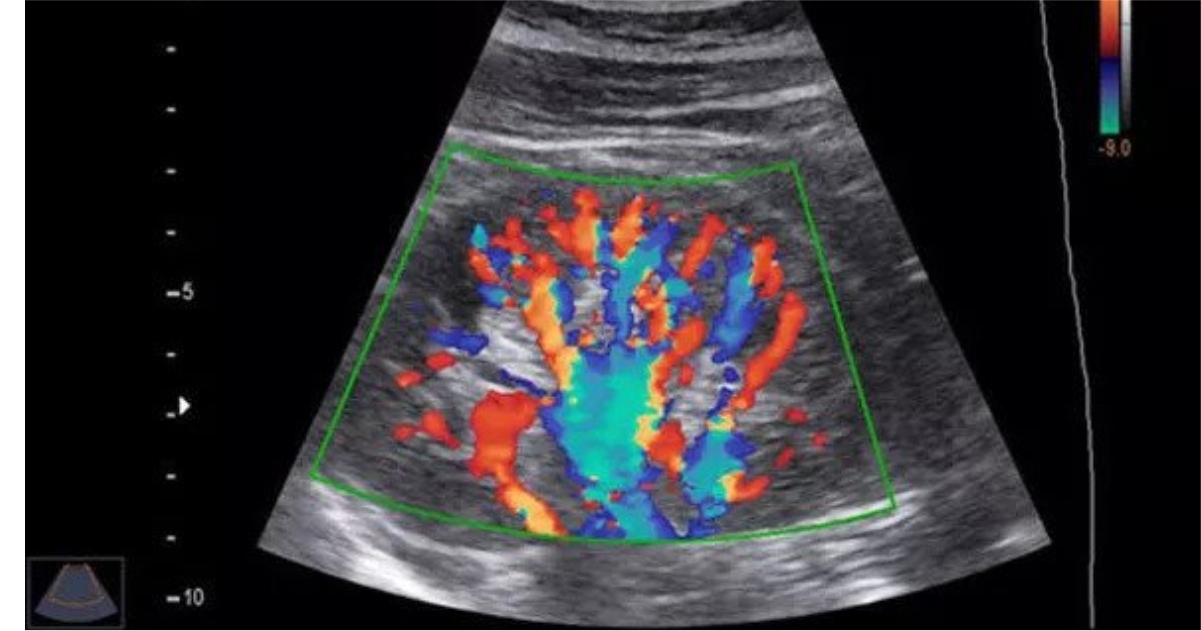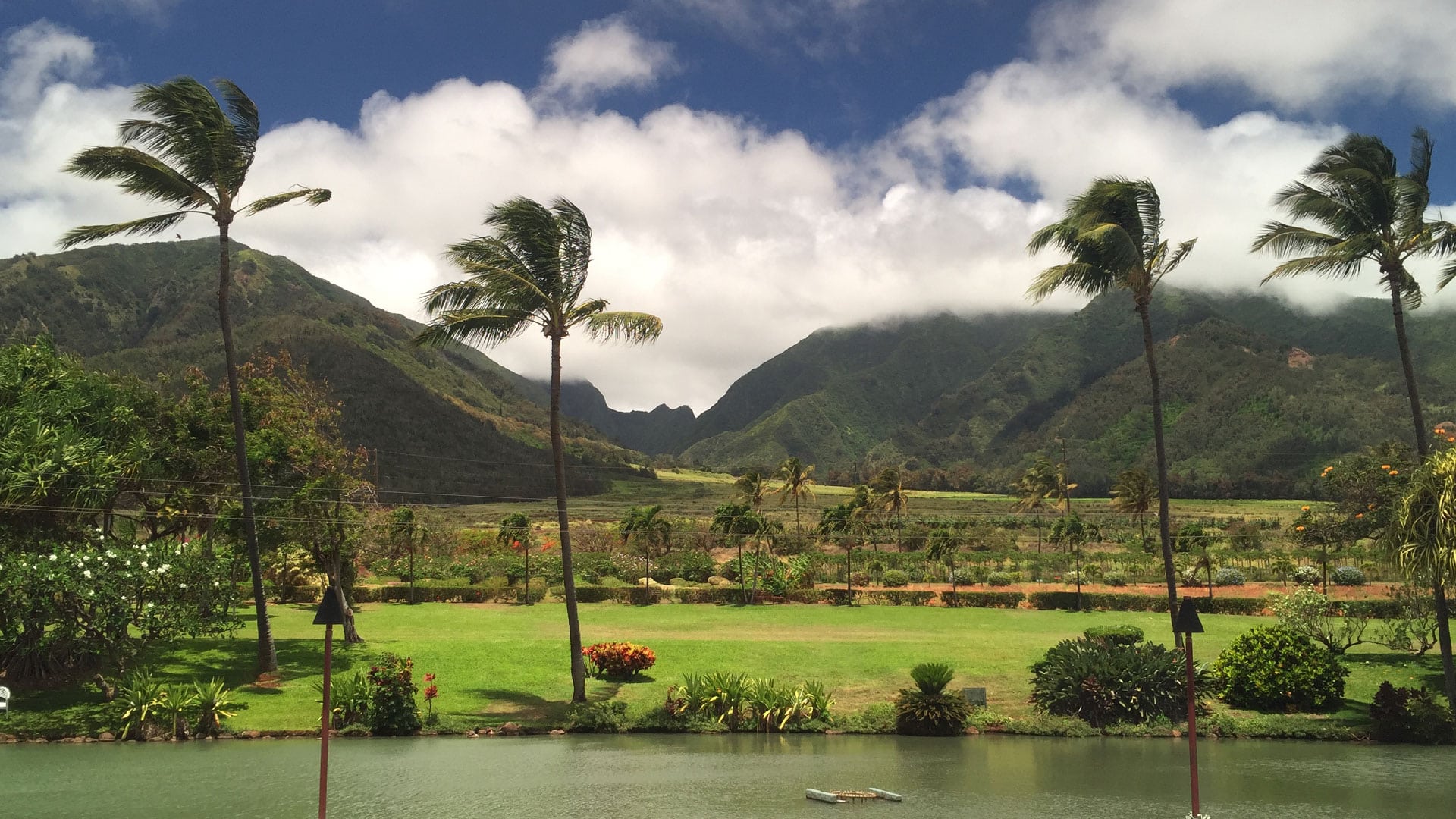

The valley-like Isthmus of Maui that separates the two volcanic masses was formed by sandy erosional deposits. The eastern flanks of both volcanoes are cut by deeply incised valleys and steep-sided ravines that run downslope to the rocky, windswept shoreline. The larger, younger volcano to the east, Haleakalā, rises to more than 10,000 ft (3,000 m) above sea level, and measures 5 mi (8.0 km) from seafloor to summit. Puʻu Kukui is the highest of the peaks at 5,788 ft (1,764 m). The older, western volcano has been eroded considerably and is cut by numerous drainages, forming the peaks of the West Maui Mountains (in Hawaiian, Mauna Kahalawai). Looking into the Haleakalā crater Volcanic rocks protrude on a Maui beach Maui is such a "volcanic doublet," formed from two shield volcanoes that overlapped one another to form an isthmus between them. Several of the volcanoes were close enough to each other that lava flows on their flanks overlapped one another, merging into a single island. Each volcanic cone in the chain of the Hawaiian Islands is built of dark, iron-rich/ quartz-poor rocks, which poured out of thousands of vents as highly fluid lava throughout millions of years. Maui's diverse landscapes are the result of a unique combination of geology, topography, and climate. Geology and topography Detailed map of Maui and Kaho'olawe The Island of Maui is also called the "Valley Isle" for the large isthmus separating its northwestern and southeastern volcanic masses. Maui's previous name was ʻIhikapalaumaewa. According to it, Hawaiʻiloa named the island after his son, who in turn was named for the demigod Māui. Native Hawaiian tradition gives the origin of the island's name in the legend of Hawaiʻiloa, the navigator credited with discovering the Hawaiian Islands. Other significant places include Kīhei (including Wailea and Makena in the Kihei Town CDP, the island's second-most-populated CDP), Lāhainā (including Kāʻanapali and Kapalua in the Lāhainā Town CDP), Makawao, Pukalani, Pāʻia, Kula, Haʻikū, and Hāna. Wailuku is the seat of Maui County and is the third-largest CDP as of 2010.

Kahului is the largest census-designated place (CDP) on the island, with a population of 26,337 as of 2010, and the island's commercial and financial hub.

In 2020, Maui had a population of 168,307, the third-highest of the Hawaiian Islands, behind Oʻahu and Hawaiʻi Island. Maui is the largest of Maui County's four islands, which include Molokaʻi, Lānaʻi, and unpopulated Kahoʻolawe. The island of Maui ( / ˈ m aʊ i/ Hawaiian: ) is the second-largest of the islands of the state of Hawaii at 727.2 square miles (1,883 km 2), and the 17th-largest island in the United States. Maui (center right, surrounded by Molokaʻi, Lānaʻi, and Kahoʻolawe) as seen from the International Space Station


 0 kommentar(er)
0 kommentar(er)
